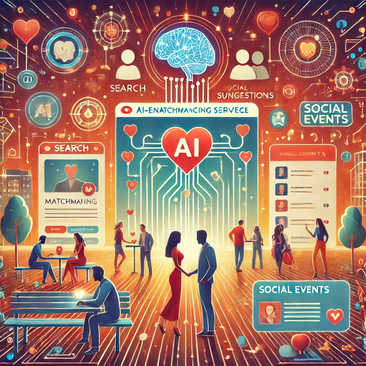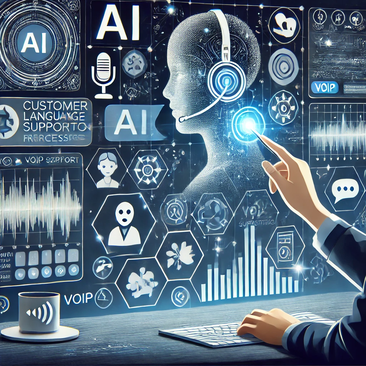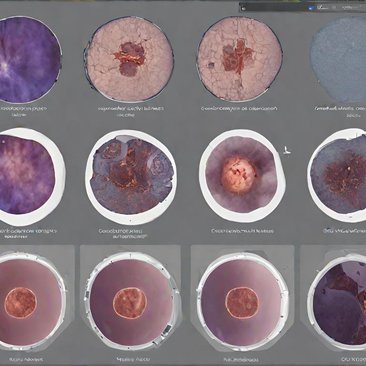Domain Description
AI solutions refer to the integration and implementation of artificial intelligence (AI) technologies into various applications, systems, and services to enable intelligent decision-making, automation, and enhanced performance. AI solutions cover a broad spectrum of use cases, ranging from LLM (Large Language Model) integration and natural language processing (NLP) to image processing, computer vision, and AI-driven automation. These technologies are transforming industries by enabling machines to learn from data, understand human language, recognize patterns, and make predictions, offering businesses a competitive edge in terms of efficiency, innovation, and scalability.
AI solutions include the use of machine learning (ML) and deep learning algorithms to analyze vast amounts of data, identify trends, and make accurate predictions. They are used in a variety of applications, such as LLM integration for chatbot services, image recognition for quality control in manufacturing, and computer vision for autonomous vehicles. Additionally, AI-driven solutions are increasingly deployed to automate routine tasks, optimize business processes, and provide personalized user experiences.
From healthcare and finance to retail and logistics, AI solutions are rapidly becoming an integral part of modern technology stacks. Companies are leveraging AI to develop smarter, faster, and more scalable applications that can meet the growing demands of a data-driven world.
What the Domain Includes
AI solutions cover a wide array of technologies and applications, with each playing a key role in enhancing business operations, decision-making, and customer experiences:
- AI Integration: AI integration refers to the process of embedding AI capabilities into existing systems and applications to enhance their functionality. This can include integrating AI for predictive analytics, recommendation systems, or customer service chatbots. Companies use AI integration to automate processes, improve decision-making, and optimize operations.
- LLM (Large Language Model) Integration: With advancements in AI, particularly in natural language models such as GPT and BERT, businesses are integrating LLMs to provide natural language understanding and generation capabilities. These models are used in chatbots, virtual assistants, and content generation tools to enhance customer support, automate communication, and generate personalized content.
- AI-Driven Services: AI-driven services leverage machine learning and AI technologies to offer intelligent services that are capable of understanding, analyzing, and acting on data in real-time. Common examples include:
- Recommendation Engines: E-commerce platforms and streaming services use AI-driven recommendation engines to provide personalized suggestions based on user behavior and preferences.
- Predictive Analytics: AI-powered predictive analytics tools help businesses anticipate future trends and outcomes by analyzing historical data. Industries like finance, healthcare, and marketing use predictive analytics for forecasting, risk management, and personalized marketing.
- Image Processing and Computer Vision: Image processing and computer vision are key AI-driven technologies used to interpret and analyze visual information from the world. These technologies enable machines to recognize objects, detect anomalies, and extract valuable insights from images and videos. Applications include:
- Facial Recognition: AI-driven facial recognition systems are used in security and authentication systems to identify individuals in real-time.
- Object Detection and Recognition: In industries such as manufacturing and retail, AI-powered computer vision systems are used for quality control, inventory management, and object tracking.
- Medical Imaging: AI solutions in healthcare use image processing to analyze medical images (e.g., X-rays, MRIs, and CT scans) to detect diseases, assist in diagnosis, and improve treatment planning.
- Natural Language Processing (NLP): NLP enables machines to understand, interpret, and generate human language. AI solutions powered by NLP are transforming industries by automating tasks that involve language processing, including:
- Chatbots and Virtual Assistants: AI-powered chatbots and virtual assistants use NLP to handle customer inquiries, automate responses, and provide personalized customer support. These AI systems are widely used in customer service, banking, and e-commerce.
- Text Analytics and Sentiment Analysis: NLP models analyze large volumes of text data, enabling businesses to extract insights from customer reviews, social media posts, and survey responses. Sentiment analysis is used to gauge public opinion and monitor brand sentiment in real-time.
- Language Translation: AI-powered translation systems, such as Google Translate, use NLP to provide accurate language translations, enabling businesses to operate globally.
- AI-Enabled Automation: AI is driving the automation of repetitive and time-consuming tasks across various industries. AI-enabled automation systems can perform complex tasks with minimal human intervention, resulting in improved efficiency and cost savings. Key areas of AI-driven automation include:
- Robotic Process Automation (RPA): RPA uses AI and machine learning to automate routine business processes such as data entry, invoicing, and report generation. AI-powered RPA systems are widely used in finance, accounting, and supply chain management.
- Autonomous Systems: Autonomous vehicles, drones, and robots rely on AI for navigation, decision-making, and task execution. AI solutions in this domain include self-driving cars, autonomous delivery systems, and industrial robots that operate without human control.
- Data Science and Machine Learning: AI solutions in data science involve using machine learning algorithms to analyze and interpret large datasets. By identifying patterns and trends, machine learning models can provide insights that drive business decisions, improve operations, and enhance customer experiences. Applications include:
- Fraud Detection: In the financial sector, AI is used to detect fraudulent transactions by analyzing patterns and anomalies in real-time.
- Personalization Engines: AI models personalize user experiences based on preferences, past behavior, and interaction history. This is commonly used in digital marketing, e-commerce, and content platforms.
Common Software Solutions in This Domain
Several tools, platforms, and frameworks help businesses build and deploy AI solutions:
- TensorFlow and PyTorch: These open-source deep learning frameworks are widely used for developing AI models, including neural networks for image processing, NLP, and predictive analytics. TensorFlow and PyTorch provide tools for building, training, and deploying machine learning models across industries.
- OpenAI GPT: The GPT (Generative Pre-trained Transformer) family of models, developed by OpenAI, is commonly used for natural language processing tasks such as text generation, summarization, and chatbot integration. GPT models enable businesses to build conversational AI tools and automate content generation.
- Google Cloud AI and AWS AI Services: Cloud platforms like Google Cloud AI and Amazon Web Services (AWS) AI offer a wide range of AI tools and services, including pre-trained models for NLP, image recognition, and machine learning. These platforms provide scalable infrastructure for deploying AI solutions in the cloud.
- IBM Watson: IBM Watson offers AI-driven solutions for industries such as healthcare, finance, and customer service. Its platform provides tools for natural language processing, data analysis, and machine learning, enabling businesses to build intelligent applications.
- Microsoft Azure AI: Azure AI offers a suite of AI services, including language understanding, speech-to-text, computer vision, and predictive analytics. Businesses use Azure Cognitive Services to integrate AI capabilities into their applications and automate tasks.
- Hugging Face: Hugging Face provides a wide range of pre-trained models for natural language processing and computer vision, including transformers for text classification, translation, and summarization. Developers use Hugging Face’s models to build AI applications quickly and efficiently.
Challenges in the Domain
AI solutions face several challenges, particularly in terms of implementation and scalability:
- Data Quality and Availability: AI models rely heavily on data to function accurately. Ensuring that high-quality, clean, and sufficient data is available for training models is a critical challenge for many businesses.
- Ethical Concerns and Bias: AI solutions can unintentionally propagate biases present in the training data, leading to unfair or discriminatory outcomes. Ensuring ethical AI usage and addressing bias in AI models are ongoing concerns.
- Scalability: Deploying AI solutions at scale can be challenging due to the computational resources required for training and running AI models, especially for deep learning and real-time applications.
- Integration with Existing Systems: Incorporating AI solutions into existing business processes and legacy systems requires careful planning and integration to ensure smooth operations and maximize value.
- Interpretability: AI models, particularly deep learning models, can be seen as "black boxes," making it difficult for businesses to understand how decisions are made. Improving model interpretability is a key challenge in AI development.
Conclusion
AI solutions are transforming industries by providing intelligent, data-driven capabilities that enhance automation, decision-making, and customer experiences. Whether through natural language processing, computer vision, or machine learning, AI-powered services are helping businesses innovate, streamline operations, and solve complex challenges. As AI technologies continue to evolve, companies will increasingly rely on AI integration to maintain a competitive edge, optimize processes, and deliver personalized, scalable solutions.






